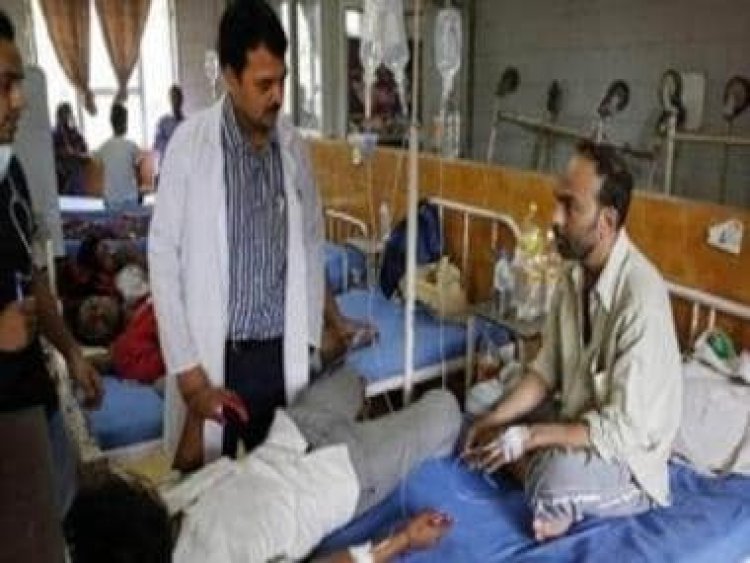How primary health care is a good approach to mitigate non-communicable diseases
How primary health care is a good approach to mitigate non-communicable diseases

Non- Communicable Diseases (NCDs) are one of the major challenges in public health in the 21st century, not only because of the intense physical pain and suffering it causes but also their effect on the socioeconomic development of the individual and the country as a whole.
What are NCDs? They are defined as diseases of long duration, generally slow progression and they are the major cause of adult mortality and morbidity worldwide (WHO, 2005a) . Four main diseases are generally considered dominant in NCD mortality and morbidity: cardiovascular diseases (including heart disease and stroke), diabetes, cancer, and chronic respiratory diseases (including chronic obstructive pulmonary disease and asthma). NCDs take the lives of approximately 41 million people (71% of global deaths) worldwide each year, including 14 million people who die between the age of 30 and 70 . However, the majority of premature NCD deaths are preventable. The World Health Organization (WHO also) projected that NCD related deaths would surge to 55 million by 2030, in the absence of timely interventions.
In India, nearly 5.8 million people (WHO report, 2015) die from NCDs every year, i.e, 1 in 4 Indians are at a risk of experiencing death before the age of 70 from an NCD. In a report “India: Health of the Nation’s States” by the Ministry of Health and Family Welfare (MOHFW), Government of India (GOI), it is found that there is an increase in the contribution of NCDs from 30% of the total disease burden- ‘disability-adjusted life years’ (DALYs) in 1990 to 55% in 2016, and also an increase in the proportion of deaths due to NCDs (among all deaths) from 37% in 1990 to 61% in 2016 . According to the National Sample Survey organization (NSSO), NCDs in India are responsible for 40% of hospital stays. This paramounts the out-of-pocket expense of 47.3 %. On the other hand households also are associated with an annual loss of roughly Rs. 280 billion for NCDs . The joint report by the World Health Organization (WHO) and the World Economic Forum estimated the income loss as $8.7 billion in 2004 and likely to increase to $54 billion by 2015. The loss of productive years in 2000 was 9.2 million.
This shows a rapid epidemiological transition with a shift in disease burden to NCDs followed by a decline in mortality and fertility rates, and the aging of the population. On the other hand, NCDs inflict a burden on the already over-stretched healthcare system of the country. Despite the stigma associated with NCDs as the rich man’s disease, the frequency of these illnesses among India’s lowest socioeconomic quintile is only marginally lower than the country’s average. The higher burden of communicable diseases and concentration on the treatment of the same, the marginalized communities hardly give any priority to the NCDs thinking wishfully that it will not affect them. Lack of awareness , on the prevention and relevance of the NCDs, and few symptoms only adds to the low priority. This results in late diagnosis, incomplete , irregular treatment and followed by complications only add to economic and social burden along with suffering. A majority of the country’s poor are scattered in rugged terrain, unaware of the prevention and relevance of the NCDs and inaccessible health services.
To address the rising concern of NCDs it is crucial that high-impact essential NCD interventions can be delivered through a primary healthcare approach to strengthening early detection and timely treatment. Evidence suggests that early detection of NCDs would reduce out-of-pocket health expenditure for people and prevent fatality. At the 1978 Alma Ata conference unanimously decided to focus on Primary Health Care (PHC) and use it as a tool to achieve the goal of “Health for All” by the year 2000 (the declaration at the World Health Assembly in 1977). India being a signatory followed the same and began by declaring its National Health Policy in 1983.
Hence, investing and prioritizing in the prevention and management of NCDs is critical. Evidence shows such interventions are excellent economic investments because, if provided early to patients, they can reduce the need for more expensive treatment. It also provides whole-person care for all the health needs throughout the lifespan, and just for a set of specific diseases. Primary health care ensures people receive comprehensive care – ranging from the promotion of health through lifestyle modifications (i.e, nutritional inputs and incorporating physical exercise) and prevention of illness to treatment, rehabilitation, and palliative care – as close as feasible to people’s everyday environment.
Although the state governments are prioritizing primary healthcare through flagship interventions like Namma Clinic in Karnataka and Makalai Thedi Maruthavam or the doorsteps health care scheme by the Tamil Nadu Government. These interventions focus on NCD screening and support the well-being of the community through Wellness Centers. However, it is also the responsibility of healthcare workers across private medical institutions, clinics, medical colleges, and other civil society organizations to come hand in hand and promote primary health care to achieve a healthy society and reduce the prevalence of NCDs.
The author is a Technical Specialist -Public Health at Swasti Health Catalyst. Views are personal.
Read all the Latest News, Trending News, Cricket News, Bollywood News,
India News and Entertainment News here. Follow us on Facebook, Twitter and Instagram.
What's Your Reaction?



























































